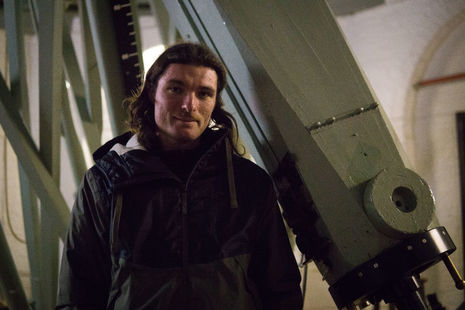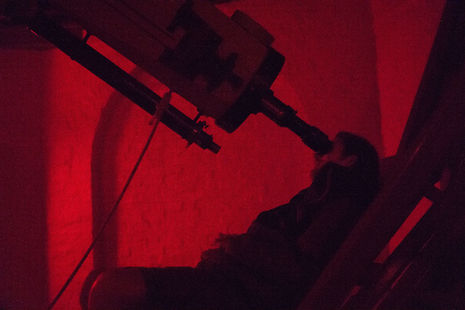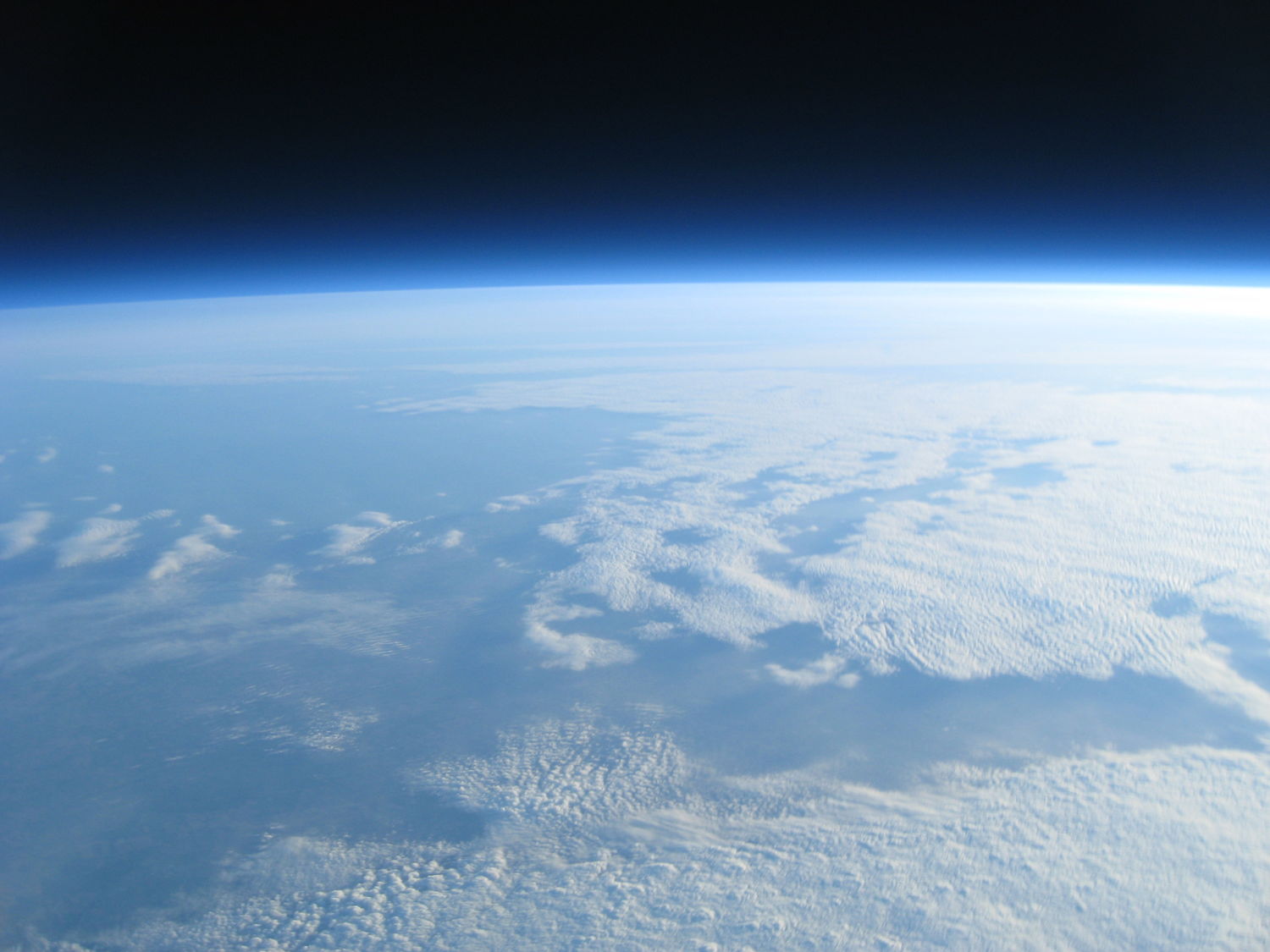200 year-old tech and exploring space: Inside CUAS
Dio Sangwon Shin speaks to Ralph Battle, to find out more about CUAS, a society whose members explore the cosmos – without ever leaving the ground

Astronomy is thought to be the earliest-studied out of all of the sciences. Archaeological evidence points to recordings of stellar observations as long as 32,000 years ago, well into prehistory. As children, many of us dream of venturing into the starry night sky, as if this affinity is encoded into our very nature as human beings. For Ralph Battle, that childhood dream has become reality - though his explorations are planted solidly on terra firma.
Battle is a fourth year earth sciences student at Emmanuel College—and a “self-taught” astronomer. Inspired by the clear skies in his home in rural Australia, his astronomy journey started with a simple observation of Jupiter through his first telescope, in 2012. Since then, he has brought his interest to Cambridge, joining the CU Astronomical Society (CUAS) as a fresher. Now, Battle is the observation secretary, or “ObsSec,” at CUAS, one of the select few students trusted to operate the historic, nearly two century-old Northumberland observatory.
Though CUAS' activities include arranging speaker talks - their last one was on "Probing the last layer of Earth's atmosphere" - it is the hands-on side of the club where Battle's specialty lies.
We couldn't have chosen a more fitting place to meet than the Northumberland telescope itself. As we walk into the room, under the observatory's dome, my eyes dart around in awe; the massive telescope dominates the room, 20ft long, and painted in the familiar (and fetching) Cambridge blue.
Once the world’s largest refracting telescope, it was used for pioneering research until the 1930s, including the near-discovery of Neptune 1845, in a scientific miss cheekily and unabashedly referenced by the name of CUAS' newsletter, simply "Neptune".
(it is said that James Challis, the director of the Cambridge Observatory, recorded the planet, but never concluded it was a new planet).
Being outcompeted by more modern astronomical instruments, the telescope was then handed over to CUAS from 1946, just four years after the club was founded.
In the observatory, Battle seems completely at home, expertly setting up the telescope for our conversation. Despite my concerns for its age, Battle assures me that the Northumberland is still more than impressive for casual observing of astronomical objects, thanks to recent refurbishments. The Northumberland is equipped with “a very good mount” and its optical weaknesses are outweighed by its large aperture size. “This telescope is pretty cool” Battle tells me “It's very good in general. It's historic." - and perhaps most importantly of all: “Oxford doesn’t have one.”

It takes more than a good telescope to observe the night sky, however; good practical training goes a long way too.
As ObsSec, Battle oversees the training of any new CUAS observers during the society’s observation nights (“ObsNights”). At each ObsNight, he demonstrates to the society members how to do “all the things” necessary to operate the telescope—from turning on the lights correctly to positioning the telescope using coordinates from an ancient, 20 year old computer. Then, almost like a practical exam, he tests them “one-on-one.” When I ask if it’s a difficult exam, he answers that the test takers “have to do everything properly,” but quickly reassures me that “80 to 90% test takers pass” on their first try.
Another factor that can't be avoided is, of course, the good old British weather. Despite being drier than most parts of the UK, the skies over Cambridge are often cloudy, and the city has become much brighter since the 1830s—making observing much more of a challenge. Though Battle claims that it is “not so terrible,” I express my doubts, having just experienced a week of unending rain and snow.
Proving his point though, Battle introduces me to the affectionately-named “ObsBook” (I'm sensing a theme to CUAS' naming scheme). It's a notebook where CUAS members record their observations. Within its records is a compendium of entries, ranging from off-hand name drops of night-sky objects, through to painstakingly meticulous sketches of planets, transiting moons, nebulae, and galaxies—each clearly marked with a date and a detailed description. Just this year, Battle tells me they have seen regular appearances by the “classic” Orion nebula, the Ring nebula, and some brighter galaxies.
Closer to home, the moon has always been a frequent visitor (and a target that's rather hard to miss), as well as the planets Jupiter, Mars and Saturn. It is an impressive array of astronomical objects, especially considering the observatory’s proximity to the evening lights of central Cambridge.
At the end of Easter term, Battle is leaving Cambridge with a masters degree. With it, his 3-year tenure as CUAS ObsSec will also come to an end—a hobby he has enthusiastically embraced throughout his university life, lockdowns and exams.
I ask him what it feels to leave it all behind: “bittersweet?”. His answer is perhaps a sentiment many final-years share: “Yeah. It's hard to imagine it's been three years.”
For many, astronomy is an objective and rational enquiry of the universe: a cutting-edge science. Battle, however, wants astronomy to be seen as a hobby, too—not something that needs any “special knowledge” or grand scientific ambitions. He shares his hopes that when this perception of astronomy is broken, more non-physicists will pick up observing as a hobby and hopefully join CUAS as well.
“I just like seeing cool stuff change in the sky,” Battle confesses, as our conversation becomes comes to an end; for him, astronomy is less science, “more of an art.”
 Comment / Plastic pubs: the problem with Cambridge alehouses 5 January 2026
Comment / Plastic pubs: the problem with Cambridge alehouses 5 January 2026 News / Cambridge businesses concerned infrastructure delays will hurt growth5 January 2026
News / Cambridge businesses concerned infrastructure delays will hurt growth5 January 2026 News / New movement ‘Cambridge is Chopped’ launched to fight against hate crime7 January 2026
News / New movement ‘Cambridge is Chopped’ launched to fight against hate crime7 January 2026 News / Uni-linked firms rank among Cambridgeshire’s largest7 January 2026
News / Uni-linked firms rank among Cambridgeshire’s largest7 January 2026 News / AstraZeneca sues for £32 million over faulty construction at Cambridge Campus31 December 2025
News / AstraZeneca sues for £32 million over faulty construction at Cambridge Campus31 December 2025









